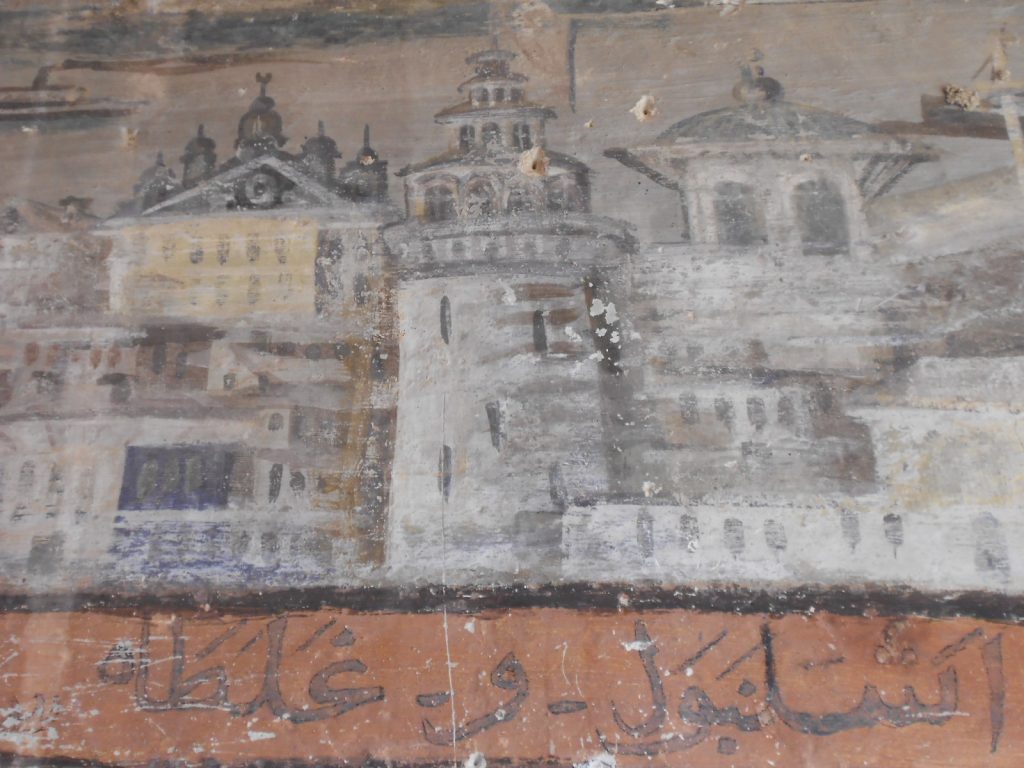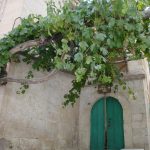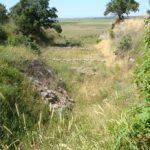Cappadocia’s wine-producing centre Population: 24,650
Old names: Osiana, Prokopi, Burgut Kalesi
Market day: Saturday
Festival: mid-September (grape harvest)
With its wonderful landscape and many cave monuments, Cappadocia is, for the most part, a rural area, but what if you want to visit but don’t fancy staying in a village? Ürgüp should fit the bill nicely since it’s right in the heart of the exotic landscape and yet manages all the amenities of a small town: shops (not all of them selling tourist souvenirs), restaurants and a wide range of hotels. What’s more, although it lacks the more formal attractions of nearby Göreme, it offers more than enough to fill a couple of days of anyone’s holiday.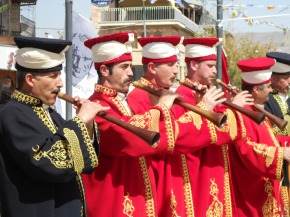 Ottoman Mehter band plays at Ürgüp Festival
Ottoman Mehter band plays at Ürgüp Festival
Backstory
There has been settlement on the site of Ürgüp since long before the Romans came, although most of the evidence is unfortunately hidden in caves deep inside the town’s three hillsides. More traces survive of the Romans who left a necropolis right in the heart of town where individual tombs have been absorbed into a hotel.
In the Middle Ages Christian monks must have settled in the area although there’s not a lot left to show for them especially in comparison with what can be seen in Göreme. Only the crumbling and inaccessible rock-cut Church of St Procopius (after whom the town was originally named Prokopi) is visible near the Yunak Evleri hotel.
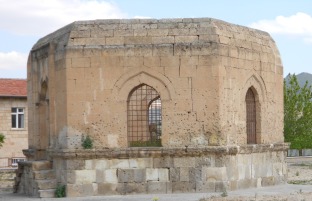
In the late Middle Ages the Selçuks left their mark on the area in the shape of the 13th-century Altı Kapılar Türbesi, a hexagonal tomb built for a local military commander.
But it was really in the 19th and 20th centuries, and especially in the years immediately preceding the Graeco-Turkish population exchange of 1924, that Ürgüp really came into its own. It was in those years that many of the magnificent mansions that can still be seen to the east of the town centre were built. However, the population exchange saw the expulsion of the Greeks.
Around town
To get your bearings start your explorations on the summit of Temenni Hill (Wishing Hill, 1100m), the huge, cave-riddled plug of rock that dominates the town centre. To get there, head up the hill leading out of town towards Göreme until you come to the İnkilip primary school on the right. Take the street in front of it and follow it as it zigzags its way to the top. A fatal rockfall in 2006 resulted in much of the summit being concreted over to stabilise the hill. However, there are still two interesting small buildings up here that repay inspection.
The first is a türbe (tomb) dedicated to the young Selçuk Sultan Ruknettin Kılıçarslan IV (1237?-65) who arrived in Ürgüp after surviving an attempt to poison him in Aksaray. Unfortunately his enemies were hot on his tail and succeeded in killing him here, whereupon his body was removed to Konya for burial. In 1863 the shrine on Temenni Hill was erected to commemorate his murder.
Also here is a small Ottoman-era library whichhouses a teahouse and an exhibition of photographs of old Ürgüp. Look out in particular for the pictures of the huge Greek Orthodox Church of St John the Russian which was, until its demolition in the 1950s, one of the finest 19th-century churches in central Anatolia (a school now stands on the site).
Temenni Hill may be riddled with caves but most are inaccessible. Guests staying at the Temenni Evi hotel will, however, have the chance to walk along a tunnel which runs right through the hill to emerge on a ledge overlooking the town centre. They can even have dinner here, should they so wish.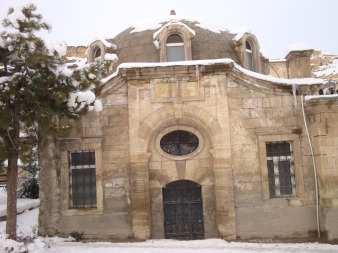 Ürgüp’s old hamam
Ürgüp’s old hamam
Descending from Temenni, you might want to follow the main road uphill past the Öğretmen Evi (Teachers House), a small local example of a style of building dubbed First National Architecture which drew on elements of Selçuk and Ottoman styles to create something new.
Just past it is a small square dominated by a monument not to a famous individual but to a television series: some of the Asmalı Konak of the early 2000s was filmed in a building tucked up a nearby side street, and it proved such a smash hit that it helped put Cappadocia on the domestic tourism map.
A little further uphill on the right is the Turasan winery where it’s possible to take a tour and sample a range of locally made vintages.
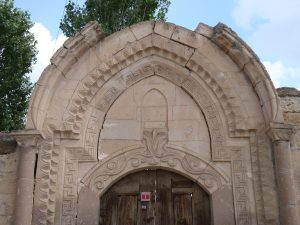 As you return to the town centre you’ll be able to admire many of the fine mansions of Ürgüp, with their elaborately decorated door and window-frames. Then, just past the Yahya Efendi Medresesi, you will see a once lovely but now crumbling house built over an arch which leads through to the old part of town where some people still live in cave houses.
As you return to the town centre you’ll be able to admire many of the fine mansions of Ürgüp, with their elaborately decorated door and window-frames. Then, just past the Yahya Efendi Medresesi, you will see a once lovely but now crumbling house built over an arch which leads through to the old part of town where some people still live in cave houses.
If instead you continue downhill and then turn right you will come to one of Ürgüp’s more unexpected attractions: the Şehir Hamamı (Turkish bath), once known as the Gavur (Infidel) Hamamı because it was used by the Greeks. It dates back to 1726. Men and women bathe together here which would never have been possible when it was a local bath-house.
The town centre is marked by a plaza dotted with cafes, restaurants and a modern clocktower. On the far side of it, Atatürk Bulvarı is lined with carpet and antique shops, and runs past a park inside which you’ll find Ürgüp’s small and unexceptional museum (closed Mondays).
That’s about it as far as the formal attractions go, although what Ürgüp lacks on the church fresco front it more than makes up for in the 19th-century secular frescoes hidden inside some of the mansions. Six houses, including one cave-house, still boast paintings on their walls, with those originally owned by Turks featuring fruit, flowers and landscapes, and those originally owned by Greeks favouring people.
Given the huge popularity of hot-air ballooning in modern-day Cappadocia, it’s astonishing to learn that a fresco inside the Sucuoğlu Konaği actually shows both a Zeppelin and a hot-air balloon floating in the skies above İstanbul in the 19th century. The painting is also a poignant reminder of how at that time many Ürgüplüs travelled to what was then the capital city to find work and send money back to their families in Cappadocia.
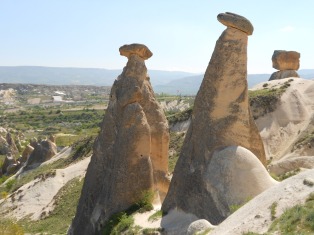 On the northern side of Temenni Tepesi sits an interesting venture, the Kayakapı cave-hotel complex which was created out of an entire abandoned mahalle (neighbourhood) and which contains within it several historic structures including the supposed home of St John the Russian and a 10th-century cave mosque.
On the northern side of Temenni Tepesi sits an interesting venture, the Kayakapı cave-hotel complex which was created out of an entire abandoned mahalle (neighbourhood) and which contains within it several historic structures including the supposed home of St John the Russian and a 10th-century cave mosque.
As for the peribacalar (fairy chimneys), the crazily conical rock formations for which Cappadocia is famous, just take the road out of town towards Göreme and almost immediately you will come to a group of them right beside the road. Given that there are two large and one small chimney, the locals refer to this gathering rather charmingly as “the Family”. Others prefer Üç Güzel, the Three Beauties.
Elkep Evi. Tel: 0384-341 6000
Esbelli Evi. Tel: 0384-341 3395
Kayakapı Premium Caves. Tel: 0384-341 8877
Sacred House. Tel: 0384-341 7102
Serinn House. Tel: 0384-341 6076
Temenni Evi. Tel: 0384-341 3341
Ürgüp Evi. Tel: 0384-341 3173
Yunak Evleri. Tel: 0384-341 6920
Eating
Ziggy’s
Transport info
There are daily flights to Kayseri and Nevşehir from İstanbul and Ankara with connections to Ürgüp. Make sure to book a seat on the shuttle bus to your hotel at the same time as you make your flight reservations as you may not be able to do this on arrival.
Otherwise it’s a gruelling overnight bus ride from İstanbul or much less bothersome five-hour one from Ankara.
Every hour there are buses to Avanos passing though Göreme, Çavuşin and the turn-off for the Zelve Open Air Museum, as well as to Nevşehir. Every two hours in the middle of the day buses also run to and from Mustafapaşa. Hourly buses also connect Ürgüp with Kayseri.
Day trip destinations
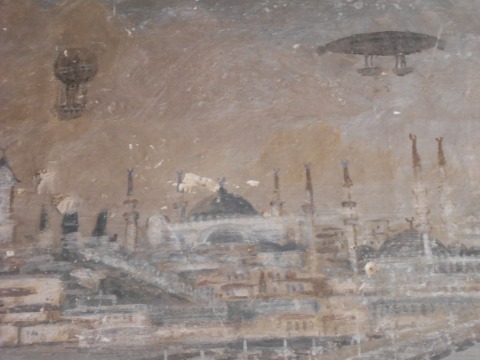 Frescoes in danger
Frescoes in danger
